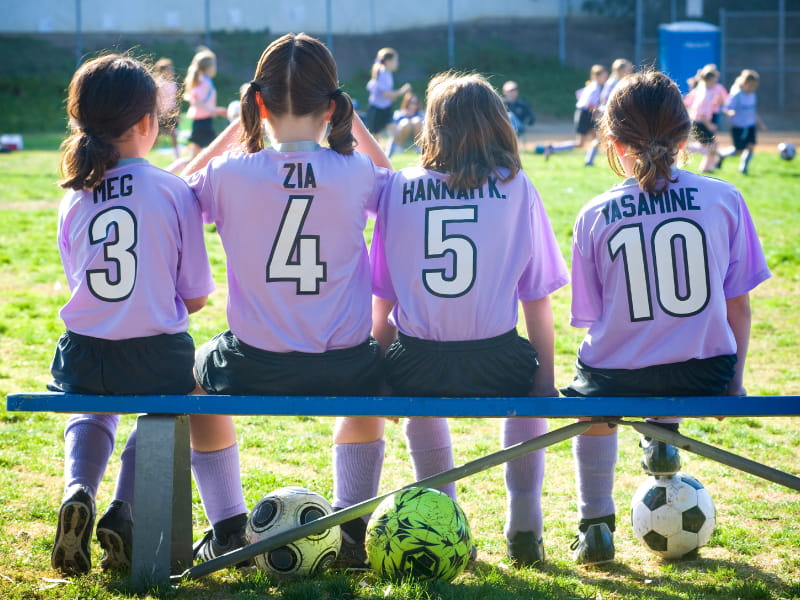Finding balance between the good of youth sports and risks of COVID-19
By American Heart Association News

Kids across the country are eager to return to the fun and fitness of team sports. But as strict lockdowns begin to ease, how should parents, coaches and young athletes balance the benefits with possible exposure to the coronavirus?
"I think you can question 10 to 20 different pediatricians, and you'll get potentially 10 to 20 different answers," said Dr. Thuy T. Bui, a pediatric emergency medicine specialist.
Doctors agree kids and teens need exercise, and sports can be a great way to encourage that. Experts also say sports can be revived in a way that limits risk. But they don't suggest it's time for kids to just get out there and play ball.
"Whatever they do is not going to be the same as before," said Bui, associate medical director for the emergency department at Children's Healthcare of Atlanta. "And it may never be. We just don't know at this point. But with that said, I do want them to get back into the mindset of staying active – because we know that activity is a great tool from a physical health standpoint. And with all these kids being cooped up for so long, just getting out and seeing their friends will be a huge mental stress buster."
Dr. Neeru Jayanthi, co-director of the Youth Sports Medicine program at Emory Healthcare in Atlanta, thinks a phased resumption of youth sports can be done "well and responsibly."
It should begin with parents and coaches knowing how active the virus is locally and following local rules, he said. After that, a phased return starts with individual training and, over time, accommodates larger gatherings, with careful attention to hand-washing, distancing and disinfecting along the way.
The details are spelled out by the United States Olympic and Paralympic Committee and the Aspen Institute's Project Play, which offers extensive guidance for sports parents and coaches.
"You don't go right to competition," Jayanthi said, partly because young athletes need time to get back into shape.
And as the USOPC says, "Until COVID-19 is either eradicated, a vaccine is developed, or a cure is found, there is no way of completely eliminating the risk of fatal infection. This should always be in the forefront of your mind when designing your return to training program."
Low-contact sports like tennis, running and golf will have an easier return than sports like football or basketball, Jayanthi said. And within any sport, the safety level of different activities varies.
Project Play, with which Jayanthi has worked as a consultant, developed a tool to assess the risk of dozens of activities, from baseball to ultimate Frisbee, based on the latest understanding of how the coronavirus is transmitted. In soccer, for example, training at home is lowest risk; team play with shared balls is highest risk.
Travel for sports also is problematic. In fighting the virus, it's one thing to trace a small outbreak in a local area, Jayanthi said. It's another to contain a "super spreader" event, where one or two sick people at a tournament could expose huge numbers of people from across the country, who could spread it throughout their communities.
The Centers for Disease Control and Prevention agrees. Its advice on youth sports lists many ways organizers might need to adapt, from limiting the sharing of equipment to reducing team sizes.
For parents, changes might mean simple things – not huddling with others during practices, or not handing out snacks after games, Jayanthi said.
He and Bui agreed that at the moment, however, it does not appear healthy young children are at high risk if they catch the virus. "Kids in general who … are pretty healthy, I think that it's safe to say that you can get them out, get them active," Bui said. "They can get around their friends" if they're keeping "a decent amount of social distancing and washing hands religiously."
She said being active through youth sports or activities such as hiking, biking and swimming offers lifelong benefits. But before kids rush off to join their teammates, older kids and teens should be reminded they can endanger others if they don't follow safety measures.
"Kids have to understand – not only is it protecting them, it's protecting their friends, their teammates and their coaches," she said.
Jayanthi, who has studied young athletes who intensely focus on one sport at an early age, said competitive parents shouldn't worry about a hiatus causing skills to erode. Athlete development models suggest youth who take even months off aren't affected, he said.
The timeout imposed by the virus is an opportunity for families to think about what sports mean to them – and maybe even recover some of the joy that can get lost in the competitive rush, Jayanthi said. "Everyone should come back to sports in some way different."
Bui said now is an opportunity to think about how to weigh individual needs – such as the need to stay active – against what's best for the community.
"Just trying to teach kids that nice balance is what I think the most important thing that we as a society – and we as parents, coaches and teachers – can do."
Editor's note: Because of the rapidly evolving events surrounding the coronavirus, the facts and advice presented in this story may have changed since publication. Visit Heart.org for the latest coverage, and check with the Centers for Disease Control and Prevention and local health officials for the most recent guidance.
If you have questions or comments about this story, please email [email protected].





